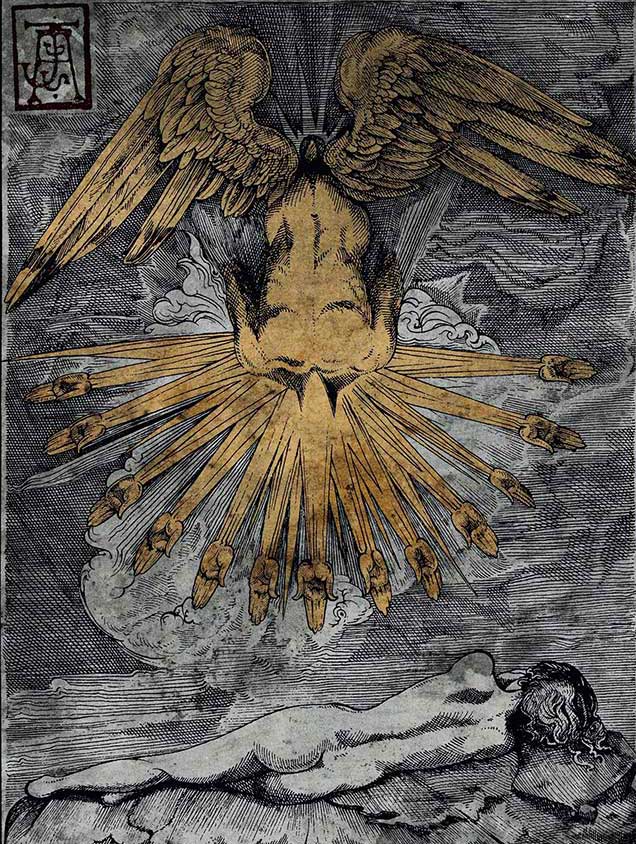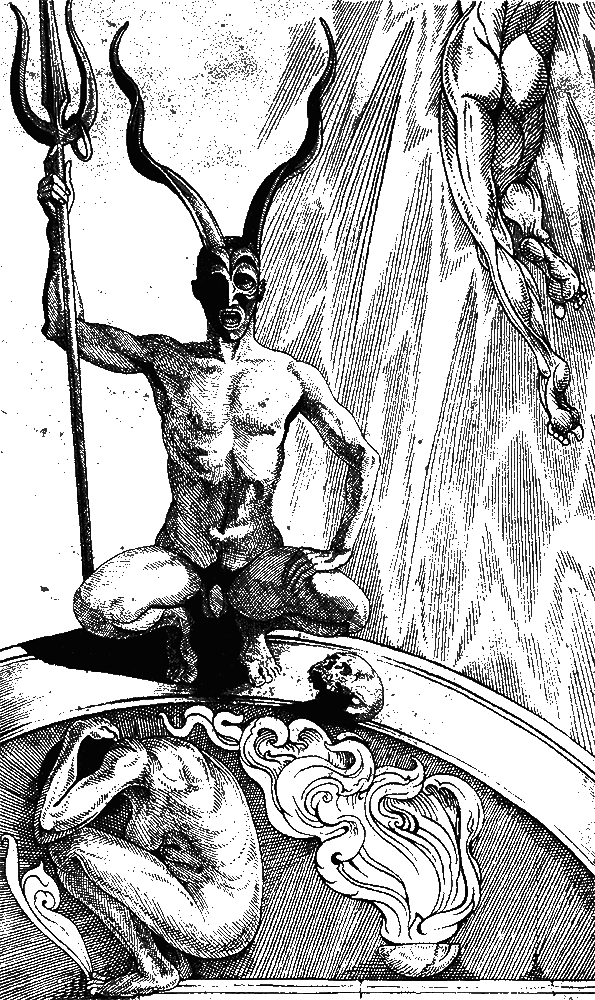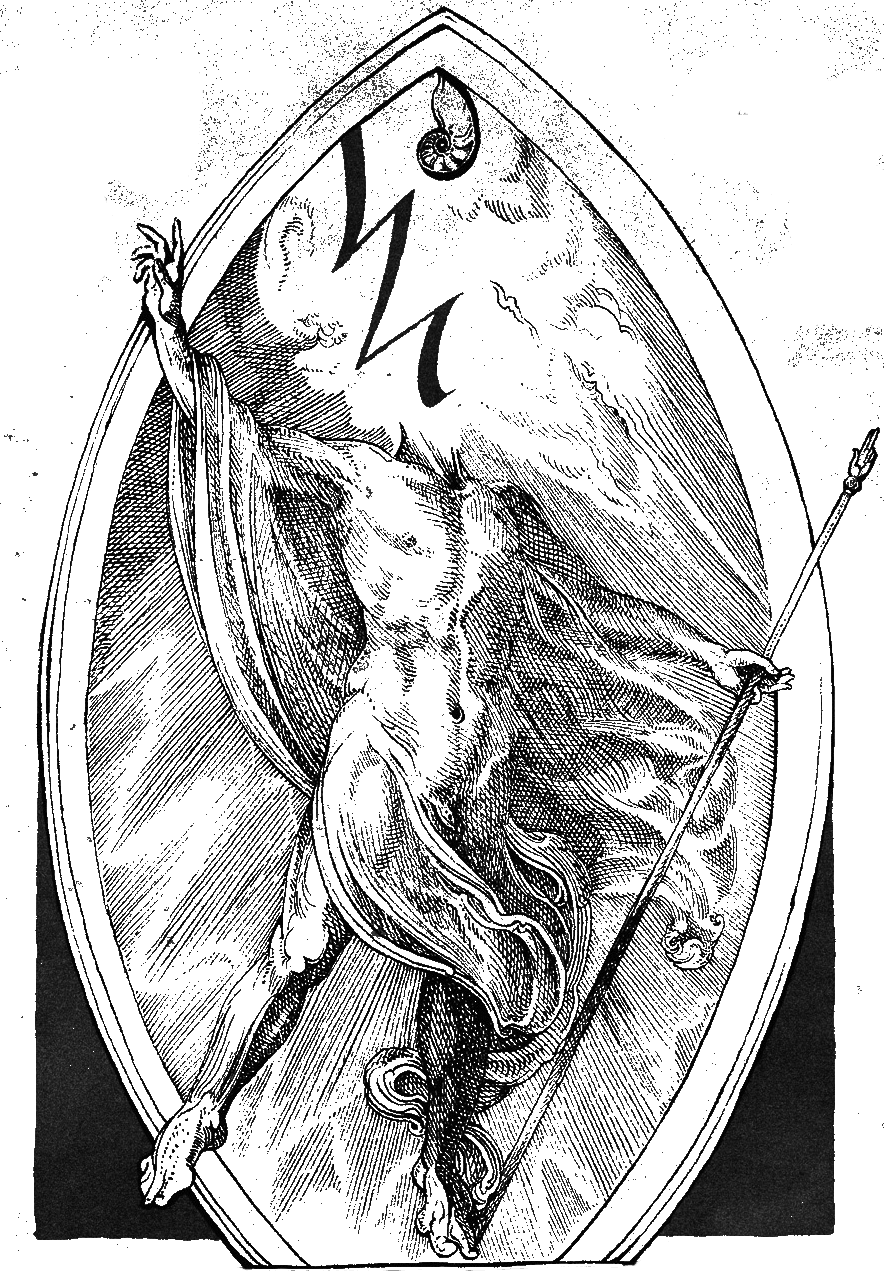Devathorn + Inferno
2019-11-04
by Niklas Göransson
Saevus Helcath and Adramelech from black metal bands Devathorn and Inferno come together to discuss their recent split album, Zos vel Thagirion – a collaborative effort exploring sanity-cleaving concepts associated with the Draconian Current.
– When the split was initially conceived, says Saevus Helcath, we were already in the process of channelling a successor to “Vritra”, the 2015 album that ushered in a new era for DEVATHORN. While the origins and characteristics of our sound remained the same, we shaped the new material in different and more aggressive ways. The band’s triumvirate core, which by that point had remained unchanged for over a decade, witnessed the addition of two new members – Hierophant and Arkhus – and this vibrant infusion gave breath to even deeper changes.
– It was Saevus who took the initiative for a split recording, says INFERNO vocalist Adramelech. We’re long-time fans of each other’s work, which is how contact was first established a few years ago. The music of DEVATHORN has a fiery charge to it, one that speaks to me in a very personal way. They really distinguish themselves from the sea of black metal bands who offer quality in many aspects but whose records eventually end up gathering dust. Around the time we released “Gnosis Kardias” (2017) we were touring, searching for a new full-time drummer, and wondering where to go next both musically and conceptually. We wanted to reach further but had only the vaguest ideas about how to go about it, so Saevus’ proposition came at precisely the right time; experimenting with a shorter release felt like a good idea. And – more importantly – he provided an outline of the split´s concept, which was highly motivational.
The theme Adramelech refers to is the esoteric concept their split is named after – it will be discussed more thoroughly later in the conversation.
– When first presenting the idea of a split, Saevus continues, I was honoured to receive enthusiastic feedback from Adramelech. DEVATHORN’s bond with INFERNO stretches back to the late 90s when we first listened to their releases and were impressed by the raw and outstanding force. They always set powerful standards and passed through many alternating phases but with full loyalty to their core basis, musical integrity, and the philosophy of black metal. As the years passed our admiration grew stronger, they were always a potent and fierce act – unique in every aspect. INFERNO’s sixth album, “Omniabsence Filled by His Greatness” (2013), came as a shock and filled us with respect towards the new direction and maturity of their compositions, combining powerful elements of the past with psychedelic and progressive explorations; breaking all the boundaries.
A 2017 interview with Adramelech, discussing both “Omniabsence…” and “Gnosis Kardias”, can be found here.
– The idea of a cooperation with such a ground-breaking act felt solid to us, Saevus continues, not only due to our personal contact and affiliation with them but for the notion of mutually engaging with a dynamic subject matter – to build and seal this monumental piece of art. We laid out the plans and designs for a painstaking endeavour, working on powerful spiritual concepts clad in fierce musical attire. The making of “Zos vel Thagirion” was, in my opinion, a process which reshaped both DEVATHORN and INFERNO.

“Zos vel Thagirion” features two new DEVATHORN songs, one track both bands contributed to, and a fifteen-minute piece courtesy of INFERNO.
– The first parts of our track were created at some point in 2016, says Adramelech, when Ska-Gul (guitars) was jamming and exchanging ideas with Sarapis, who played drums on “Black Devotion”, “Omniabsence…” and, eventually, the split as well – despite us already having found a new drummer. Musically and lyrically, we were constantly going back and forth. Plus, several other mundane matters kept hindering the creative process. There were many factors which eventually gave us the necessary spark to finish the work, but as most beneficial I can specifically identify my discussions with Saevus as well as one simple remark Stephen Lockhart made about the demo we sent him; his observation ignited a crucial train of thought.
Lockhart is the man behind REBIRTH OF NEFAST, Studio Emissary, and an Icelandic festival called Ascension. His advice was for INFERNO to begin thinking more in terms of composing soundscapes rather than continuing to layer guitar tracks on top of each other.
– The new song will serve as a musical and thematic bridge leading towards our next album. When we began adapting the material to the split’s thematic content, the previous lyrics had to be discarded and some parts of the song reworked before everything finally fell into place. Serving as another link to “Gnosis Kardias”, Acherontas V. Priest (ACHERONTAS) provided additional vocals on our track. The final mixing and mastering of “The Solitary Immersion into Autarchic Silence” took place around the turn of 2017 and 2018. As you can see, finishing our part of the split really took some time. But, more importantly, the creative work in general was very refreshing – thanks to that inspirational spark we’ve now more or less finished writing our next full-length album, with the current aim of recording it in early 2020.
– For their role in appointing and empowering the diverse characteristics of each track, continues Saevus, a special acknowledgement should be made regarding the excellent sound manipulation by Necromorbus Studio, Studio Emissary, and 9800 Studios. Overall, we’re greatly satisfied with the outcome of the whole endeavour, which saw the light of day via World Terror Committee in December 2018. For us, this release holds two tracks which are milestones in the New Reformation of DEVATHORN. Through the violent and poisonous twists and turns in its song-structure, “Azazyel Iscariot” explores a dynamic aspect of the thought-form – symbolically bearing the numinous and abyssal extensions of the connection between Azazyel and the Qliphothic counterparts. “Omphalos”, on the other hand, was a unique choice for us. This track emerged out of collaboration with a respected artist and brother, Michael Idehall, who hails from another musical genre which no established labels are fit to describe.
Michael Idehall’s work is indeed difficult to categorise – the Swedish musician has himself used the term ‘seancetronica’. His musical foundations lie in dark industrial but also feature various experimental elements, percussion, and vocal incantations.
– “Omphalos” in its original form – released on Idehall’s “Deep Code Sol” album – was a track which impressed and influenced us so deeply that giving it new form became the obvious choice. Thus, Michael not only participated in the capacity of guest musician, his work served as a core for us to build further upon. A song written out of the emanations produced by another song; a shamanic cycle on an axis of Draconian rebirth and luminous experience.
Another musically cooperative effort present on “Zos vel Thagirion” is the split’s eponymous concluding track.
– The last song bears the title of the release itself and holds a special place in our hearts, says Saevus. In an active collaboration, we prepared a basis of ritual ambience filled with the essence of DEVATHORN whereupon INFERNO contributed an excellent set of guitar drones and other elements, all of which completed and enlarged its reverence.

The art featured in the booklet is quite impressive – were the designs left up to the artists or did you provide instructions?
– We could leave it up to them, says Adramelech. The cooperation was very straightforward since both the illustrator, Jose Gabriel Alegria Sabogal, and Mentalporn – who handled the layout – worked with us on “Gnosis Kardias”. In a way, “The Solitary Immersion of Autarchic Silence” continues the concept of previous albums but within the split’s framework. They were provided with lyrics and demos of both bands as well as other information, but no complicated exchanges were necessary because it all clicked right away.
– Every drawing and detail of the artwork reflects parts of the concept, says Saevus, they were designed to represent the numinous metaphors hidden therein. Even now, the more we study the details of these drawings, the more we discover previously unnoticed symbolisms, links, and extensions of the very concept itself. Gradually, throughout the course of the album, the listener is baptised in the flaming river of Zos vel Thagirion – guided by our music and driven by the artwork.
One would have to conclude the album title related to Zos vel Thanatos, the pseudonym of English artist and mystic Austin Osman Spare. The word ‘Zos’ is of Spare’s own invention, meant to symbolise the human body and mind, whereas ‘vel’ is a mathematical term for ‘or’. Thanatos is the Ancient Greek personification of death – ergo, ‘Zos or Death’. In my interviewees’ version, Thanatos has been replaced by the Qliphah of Thagirion. In the Kabbalistic tradition, the Qliphoth is the mirror image of the holy Sephirot and represents various unsavoury metaphysical forces. Thagirion is one such emanation and signifies conflict; the grievances of demons known as Disputers brought against Creation. The Thagirion Qlipha has a counterpart in the Sephirot, a Sephirah called Tiphareth which stands for balance and harmony.
– The reference to Spare can be interpreted in many ways, says Adramelech. For us, he is THE artist and the ultimate proof that art is, in essence, magic. We refer mainly to the energies of the sphere, and their various interpretations which then appear in the lyrics. “The Solitary Immersion into Autarchic Silence” mirrors “Upheaval of Silence” from “Gnosis Kardias”, a song linked to the Sephirah of Tiphareth and therefore connected to Thagirion. The shadow protagonist of the lyrics passes the sentence over the previous failed creation and achieves its apotheosis, becoming an Abraxas-like entity and creating within itself a new existence where silence is everything.
– Zos vel Thagirion is a topic we could analyse for days, Saevus continues, but – at the same time – very little can actually be said about it. We could also draw lines and parallels to apocalyptic works such as those of Austin Osmar Spare and the Hermetic Qabalah in general, or the extreme significance of this context within the Draconian Current. But what’s really important is for the listener to actually experience Zos vel Thagirion rather than focusing on its origins, etymology, or complex esoteric values. The term was received in the form of a spark and then worked on both as a magical, spiritual, and philosophical concept; gradually expanding and evolving, implementing the unimaginable force of the Thagirion Qlipha and encountering an extension of its countless abyssal attributes.
Saevus says that Thagirion itself is a largely unexplored, almost inconceivable, and incomprehensible topic; one which due to the essence of the Qlipha itself is nearly impossible to approach or analyse from either a scholarly or mundane perspective.
– The key to accessing the mystery of Thagirion, and Zos vel Thagirion accordingly, lies in extrasensory and unbound experience, pure contact with the axioms and attributes of the Qlipha. The Disputers Thagirion is often associated with signify the strife for total dissolution of conscious sanity and structure, an act of alchemical destruction in order to achieve the primordial, atavistic, and animalistic aspects of the Self; parts buried deep under the veil of temporary, mortal perspectives. The most revolting aspects of the human psyche surface and the energy of the Thagirion – also referred to as the Qliphothic counterpart to the Radiant Sun – burns every last karmic remnant of the old Self. Imagine the rays of the sun melting ice to reveal buried, forgotten, yet fertile soil. One of these rays is, symbolically, Zos vel Thagirion. A formula and mantra, words which no longer bear grammatical meaning but have become a phonetic vibration. It’s a tool to invoke the forces which brought it to existence. Nonetheless, to empower and amplify the listening experience, an explanatory text was included in the layout.
To be honest, I’m not sure I’d call the text in question all that explanatory. Admittedly, I’m by no means an esoteric authority but at least half of the magical names bandied about were hitherto unfamiliar to me, making it exceptionally challenging to make any sense of.
– The text is intentionally filled with heavy symbolism and parabolic connections along with solid information and guidelines to the heart of Zos vel Thagirion, with the sole purpose of triggering the listener’s sensors and granting initiative to the experiential process. It would be a pleasure and great personal initiative to analyse this theme and fill many pages with views and notions on it, but it’s far more important for the listener to summon the courage to build his or her own perception.
– For us, says Adramelech, this is the true meaning of musical cooperation as demanded by a split release – an alchemical union of similar and diverse elements, merging and interacting upon the procreation of a new entity. The concept’s very core was a highly personal magical perspective which had to be dynamically advanced and interspersed with the qualities of both DEVATHORN and INFERNO. It was a real pleasure to analyse, experiment, and exchange views and experiences as the process unfolded. We were both greatly challenged to both spiritually and philosophically contend and cope with this kind of specialised concept, drawn from the unexplored and nearly incomprehensible depths of the Qliphoth. Developing lyrics within the framework of the Draconian Current was a bit tricky but, eventually, we were able to do it in our own way.

DEVATHORN included a dedication to Dragon Rouge, are you a member?
– Indeed, says Saevus, the release was dedicated to the powerful auspices of Dragon Rouge – Ordo Draconis et Atri Adamantis – of which I am a member and that greatly affected the conception and materialisation of this release, musically as well as lyrically. Working with the Draconian Current is neither a shallow philosophical concept nor an inconsequential theoretical act, but rather a strong magical standpoint and dynamic stance towards life in general. Besides the obvious lyrical influence, the music itself derives from the process of channelling esoteric experiences and spiritual initiative which ignite the will to create. A vibrant source of inspiration and an unlimited determination to channel and express the inner flame; a framework wherein music serves as both an act of meditation and a form of initiation.
I’m neither in the business of peddling nor following esoteric gossip, but it’s been difficult not to notice how there’s been some organisational changes to the Order as of late.
– There’s no ground for gossip or speculation, such things can only cause harm and disorientation from the actual purpose and task of the Order. Dragon Rouge has always been a living organism undergoing countless changes, minor or major, throughout its thirty-year lifespan until today. We feel an unspeakable admiration to the legacy built over all these years, as well as great respect towards every single member and factor – old and new, past or present – who contributed soul and essence to the mission of Dragon Rouge. The Order is currently undergoing the process of the New Reformation; now, not only the members but also the Order itself is passing through gradual steps of Initiation and advancing deeper within the unexplored waters of the Draconian Current and the countless realities of the Great Red Dragon.



